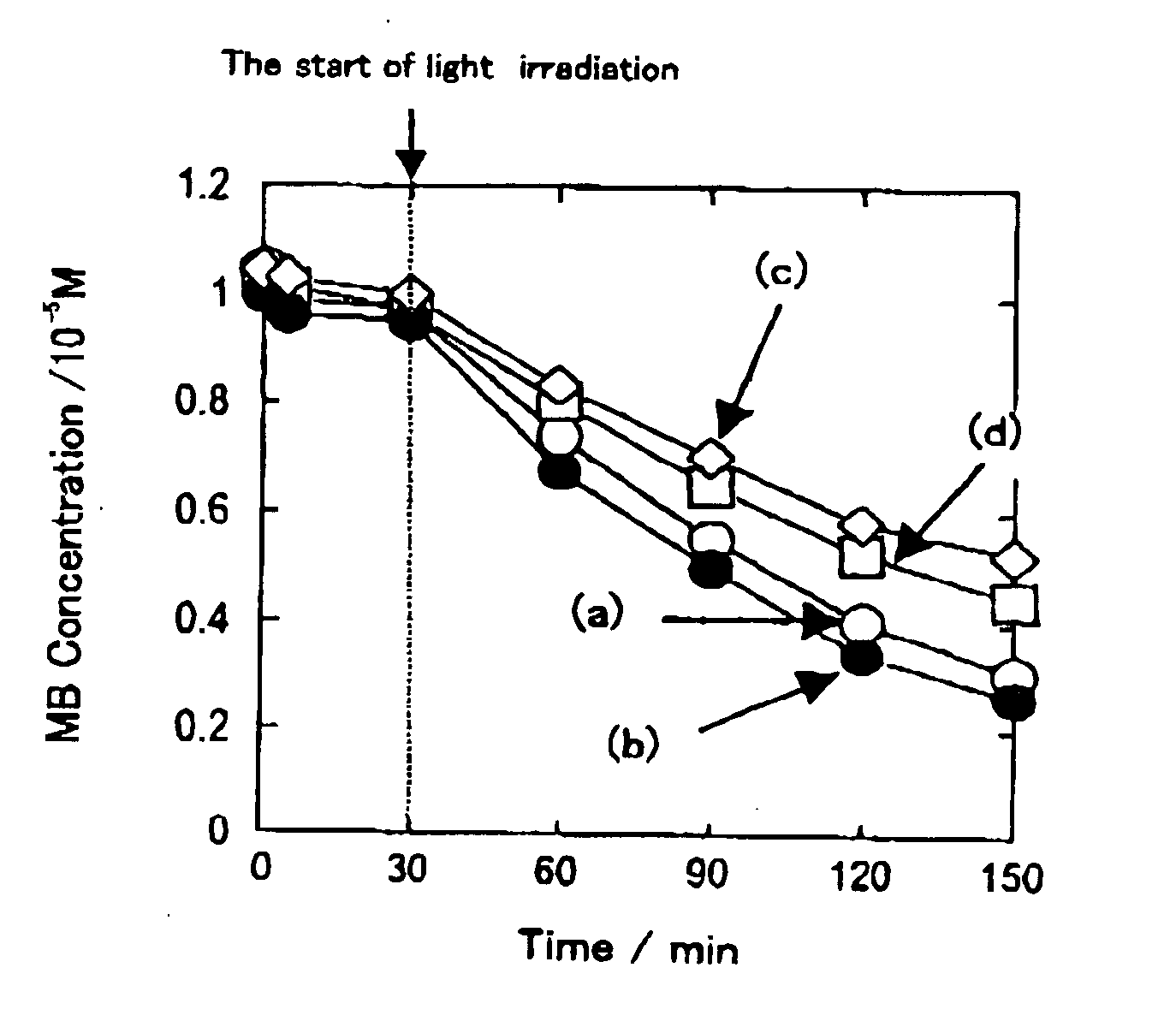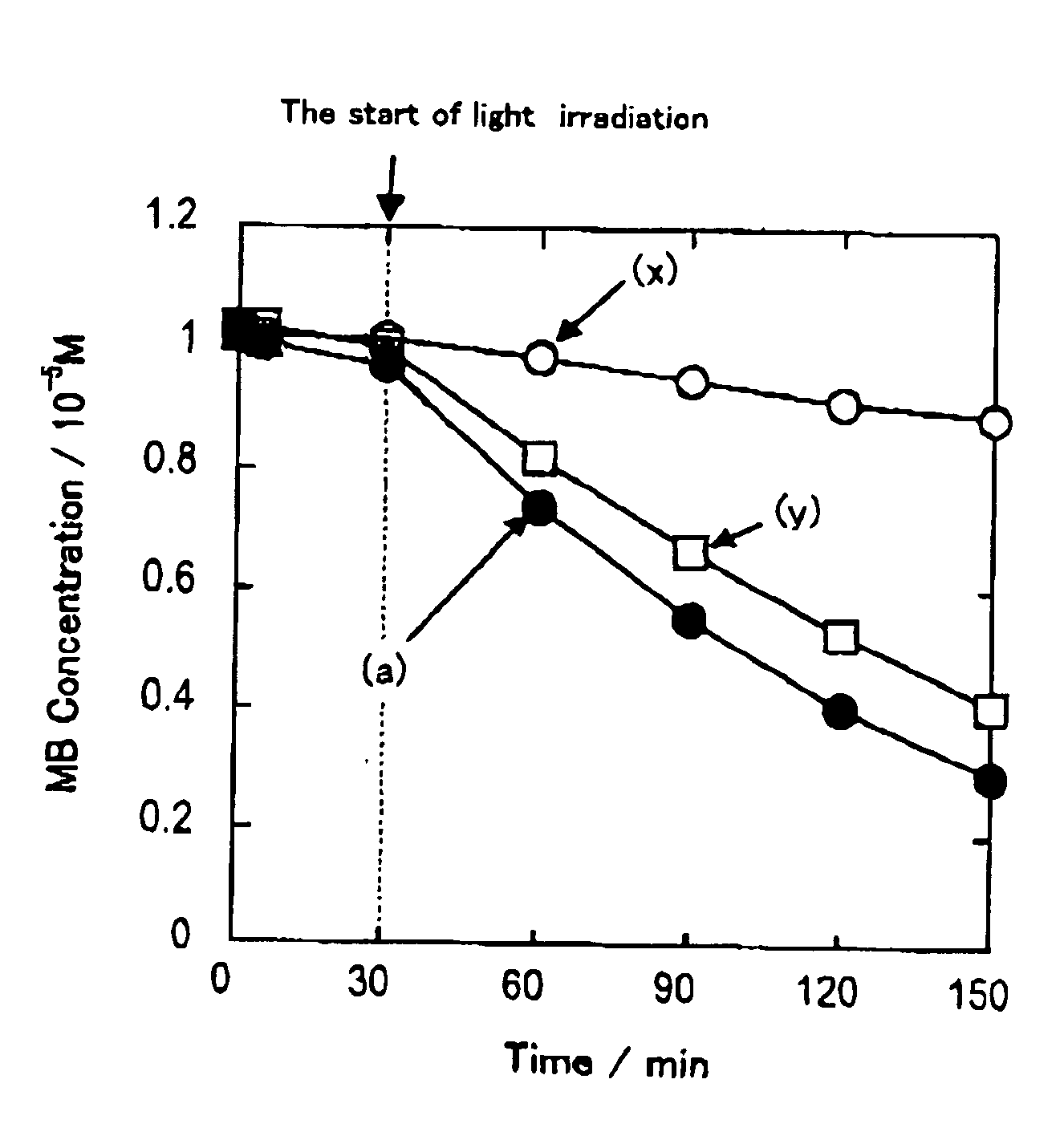Transparent thin film and method for production thereof
a technology of transparent thin film and substrate, which is applied in the direction of catalyst activation/preparation, natural mineral layered products, chemical/physical processes, etc., can solve the problems of limited materials for supporting materials, poor heat resistance materials such as organic polymers, and inability to be used as supports
- Summary
- Abstract
- Description
- Claims
- Application Information
AI Technical Summary
Benefits of technology
Problems solved by technology
Method used
Image
Examples
example
(Example 1)
[0043] Using titanium (IV) tetra-n-butoxide [Ti(O-n-Bu)4] as a titanium compound and silicon exthoxide [Si(OEt)4] as a silicon alkoxide, a transparent thin film was produced by the following procedure.
[0044] First, the silicon triethoxide was supplemented with 3.6% by weight of hydrochloric acid as a catalyst, and combined with ethanol and water in the ratio represented by Si(OEt)4:EtOH:H2O=1:5:4, and then stirred for 30 minutes at room temperature. This solution was mixed at various concentrations with a solution of the titanium (IV) tetra-n-butoxide dissolved in ethanol in the ratio represented by Ti(O-n-Bu)4:EtOH=1:2 to obtain sol solutions.
[0045] The solution was mixed so that the four concentrations, namely, SiO2:TiO2=(a)5:1, (b)3:1, (c)l:l and (d)1:3 were obtained.
[0046] Any of these sol solution was coated onto the surface of an inorganic alkaline glass support by a dip coating method, and heated for 1 hour at 90° C. to obtain a thin film. The thin film was the...
example 2
(Example 2)
[0053] The transparent thin films (1) to (8) prepared similarly to EXAMPLE 1 but using the ratios of the silica and the titania shown in Table 1 were examined for the contact angle with water.
[0054] The measurement of the contact angle was conducted for a thin film itself in the 1st time, for a fluoroalkylsilane-coated thin film in the 2nd time, and for an UV-irradiated thin film in the 3rd time.
[0055] The results are included in Table 1.
TABLE 1No.12345678TiO2 %0916.525335075100by mole1st time 2nd time108°120°123°145°138°116°115°110°3rd time108°
[0056] As evident from Table 1, each of the inventive transparent thin films (2) to (7) was proven to exhibit a superhydrophilicity reflected by a contact angle with water of 5° or less.
[0057] All transparent thin films were revealed to exhibit a hydrophobicity as a result of the coating with the fluoroalkylsilane. A superhydrophobicity reflected by the contact angle of 145 was identified especially in the transp...
PUM
| Property | Measurement | Unit |
|---|---|---|
| lattice spacing | aaaaa | aaaaa |
| contact angle | aaaaa | aaaaa |
| temperature | aaaaa | aaaaa |
Abstract
Description
Claims
Application Information
 Login to View More
Login to View More - R&D
- Intellectual Property
- Life Sciences
- Materials
- Tech Scout
- Unparalleled Data Quality
- Higher Quality Content
- 60% Fewer Hallucinations
Browse by: Latest US Patents, China's latest patents, Technical Efficacy Thesaurus, Application Domain, Technology Topic, Popular Technical Reports.
© 2025 PatSnap. All rights reserved.Legal|Privacy policy|Modern Slavery Act Transparency Statement|Sitemap|About US| Contact US: help@patsnap.com



